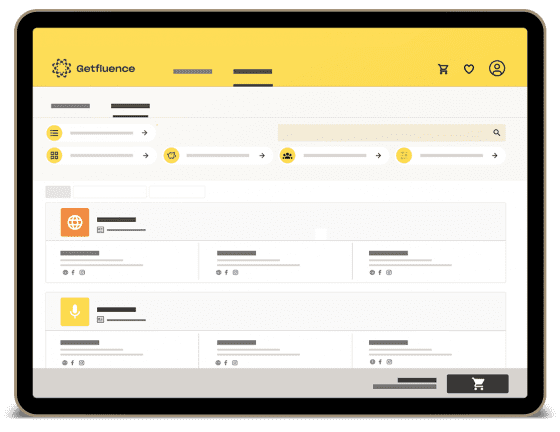Content optimization is a great way to boost your SEO and marketing campaigns.
At least, if you know how to do it properly.
In this guide, we’ll go over some of the best practices you can implement to get the most out of your content optimization efforts, as to boost your SEO game and your overall marketing campaigns.
Let’s start with a basic definition of ‘content optimization’:
Content optimization is the process of refining your content to make it more appealing, useful, and accessible to both your target audience and search engines.
Its goal is to improve your content’s visibility in search engine results and increase user engagement, ultimately leading to better results for your digital marketing campaigns.
But how can you get the most out of it?
Well, here are four best practices that can help you master content optimization for your SEO and marketing needs:
1. Harness long-tail keywords to target niche audiences
The first way you can use content optimization to master your SEO and marketing campaigns is by taking advantage of long-tail keywords to reach specific niches.
Indeed, there are plenty of reasons why long-tail keywords can be a goldmine for targeting your niche audiences:
- Less competition
Long-tail keywords typically have lower search volumes, meaning less competition for those valuable top spots in search engine rankings.
This makes it easier for your content to rank higher and get noticed by your specific target audience.
- Higher conversion rates
As a rule of thumb, the more specific the query, the further along the user is in their buyer’s journey.
And thus… the more likely to get converted!
Users who search for long-tail keywords have a clear intent and are looking for precise information or solutions, which means they’re more inclined to take action, such as making a purchase or subscribing to your newsletter.
- More targeted traffic
By targeting long-tail keywords, you’ll attract a more focused audience interested in your specific content.
This will allow you to niche down, thus helping you get better engagement and higher-quality leads for your business.
Now, let’s get deep on the subject and explore some ways you can incorporate long-tail keywords in your content optimization strategy, as to improve both SEO and UX.
Here are some practical tips:
1. Use keyword research tools (like Google Keyword Planner, Ahrefs, or SEMrush) to find relevant long-tail keywords.
Look for phrases with a decent search volume but low competition, as these keywords offer the best opportunity for ranking success.
2. Create content that answers the questions or concerns of users searching for these terms.
This could include blog posts, in-depth guides, case studies, or even video tutorials – whatever format best suits your audience’s needs and preferences.
3. Use long-tail keywords in your headings, titles, and meta descriptions, as well as within the body of your content.
This helps search engines understand the focus of your content and can improve its visibility in search results.
4. Keep track of your long-tail keyword performance.
Finally, remember to regularly monitor your website’s analytics, as to see how your content is performing for your targeted keywords.
Adjust your strategy as needed, and continue to optimize your content for long-tail keywords that drive the best results for your business.
2. Use internal linking to enhance UX and SEO
Internal linking is a crucial element to the success of both user experience and SEO.
But how does it interact with them? Here’s a detailed explanation:
- Improved UX
Internal links help users navigate your site more efficiently and discover relevant content.
By guiding users to related articles or pages, you increase their time on-site and engagement, which can lead to higher conversion rates.
Internal linking also helps users understand the structure and organization of your site, making it easier for them to find the information they’re looking for.
- Better SEO
When search engine crawlers visit your site, they follow internal links to discover new pages and index them accordingly.
Internal links thus help search engines understand your site’s structure and content, improving your site’s crawlability and indexability.
Now, let’s get straight to some of the best ways you can use internal linking for your content optimization and improve both UX and SEO:
- Add links to relevant content within your posts or articles
Look for natural opportunities to link to other pieces of content on your site that offer additional value or information to your readers.
This could include related blog posts, product pages, or even resources like ebooks or whitepapers. - Use descriptive anchor text that accurately reflects the linked content
Instead of using generic phrases like “click here” or “learn more“, choose anchor text that gives users a clear idea of what they can expect when they click on the link.
This not only improves the user experience but also helps search engines understand the context of your linked content. - Avoid overloading your content with too many links
Finally, aim for a natural, user-friendly approach with your netlinking.
While it’s essential to include internal links in your content, adding too many can make your content appear spammy and reduce its overall quality.
Focus on providing valuable and helpful links that genuinely enhance the user experience, striving to find the right balance.
3. Understand the impact of content length and format on search rankings
Content length and format can significantly influence your search rankings, as search engines prefer content that provides value and adequately answers users’ queries.
Striking the right balance between content length and format can thus lead to better search engine visibility and improved user engagement.
But let’s take a closer look at how content length and format impact search rankings and explore some strategies for content optimization:
- In-depth, long-form content (generally) ranks better
Long-form content tends to perform better in search results than shorter content.
This is because longer content can cover a topic more comprehensively, providing more value to users and showcasing your expertise to search engines.
Additionally, long-form content often attracts more backlinks and social shares, which can boost your search rankings even further.
- Readability and scannability
The format of your content plays a crucial role in its overall readability and scannability.
Needless to say, users are more likely to engage with content that is easy to read and visually appealing.
Therefore, strive to keep paragraphs short and easy to digest, use a mix of headings and subheadings to break up your text, and incorporate bullet points or numbered lists to highlight key points.
- Multimedia elements
Incorporating images, videos, and other multimedia elements into your content can enhance user engagement and break up large blocks of text.
These elements not only make your content more visually appealing, but they can also provide additional value and information to your users.
When using multimedia elements, ensure they are optimized for web use, such as compressing image files and using descriptive filenames and alt text.
Here are some actionable tips to optimize your content length and format for improved search rankings:
- Analyze your audience and their preferences to determine the ideal content length and format for your niche.
You may consider conducting surveys or using analytics data, as to identify which types of content resonate the most with your users. - Develop a content plan that incorporates a mix of long-form and short-form content, as well as various formats to cater to different user preferences.
- Continuously monitor your content’s performance using analytics tools, and adjust your content length and format strategy accordingly, as to maximize user engagement and search rankings.
4. Improve user experience and search performance with mobile content optimization
With the majority of web traffic now coming from mobile devices, search engines like Google have shifted their focus to prioritize mobile-friendly websites in their search results.
That’s why you shall allocate the right attention and resources to mobile content optimization, as to make everything you share easily accessible, visually appealing, and user-friendly on smartphones and tablets.
But here’s a more detailed overview of how optimizing-for-mobile can impact both UX and search rankings:
- Improved user experience
Mobile users expect fast-loading and easy-to-navigate content that fits seamlessly on their device’s screen.
By optimizing your content for mobile devices, you can provide a better user experience, leading to increased engagement, lower bounce rates, and higher conversion rates.
- Higher search rankings
As said, Google and other search engines prioritize mobile-friendly content in their search results, as part of their “mobile-first” indexing approach.
By optimizing your content for mobile devices, you can improve your search rankings and gain more visibility in search results.
- Greater reach
As more and more people use their mobile devices to access the internet, having mobile-optimized content can help you reach a wider audience and tap into new market segments.
So, how can you master mobile content optimization to improve search rankings and user experience?
Here are some actionable tips that may help you:
- Ensure your website is mobile-responsive
A mobile-responsive website automatically adjusts its layout, images, and navigation to fit different screen sizes and devices.
This ensures that your content looks great and is easy to navigate on any device.
Use a mobile-responsive theme or template for your website, or work with a web developer to create a custom solution. - Optimize page load speed
Mobile users expect fast-loading content, and search engines factor page load speed into their ranking algorithms.
Optimize your site’s speed by compressing images, minifying CSS and JavaScript files, leveraging browser caching, and using a content delivery network (CDN). - Use mobile-friendly fonts and text sizes
Choose fonts and text sizes that are easy to read on small screens.
Avoid using small or overly stylized fonts that can be difficult for mobile users to read.
Also, consider using a larger font size for headings and subheadings, as to make your content more scannable. - Test your content on different devices
Finally, regularly test your content on various mobile devices and screen sizes to ensure it displays correctly and is easy to navigate.
Use tools like Google’s Mobile-Friendly Test, BrowserStack, or Responsinator to check your site’s mobile compatibility.
Want to take your SEO and marketing campaigns even further?

Content optimization can be a powerful ally to boost your SEO and marketing efforts.
However, it may not be enough to build long-lasting and stable results – whether your goal is to rank high in the SERPs, or to spread your messaging to reach your audience.
If you want to master your SEO and marketing campaigns with concrete results over time, you need the perfect mix of strategy, knowledge, and the right tools on the market.
That’s exactly where Getfluence comes to help.
Getfluence is the global marketplace that helps you boost your SEO & branding by letting you share content that associates with your brand on the world’s top publishers, such as The Economist & Forbes.
With Getfluence, you will earn high-quality backlinks that will make you rank higher in the SERPs, while strengthening your brand’s image in your exact, specific area of expertise.
Think of it this way…
How would it sound if you could spread your offering in a natural, appealing way, right where you know your audience is roaming around?
Getfluence helps you exactly do that, connecting your target audience to your products or services in a natural way, all while boosting your rankings in the SERPs!





